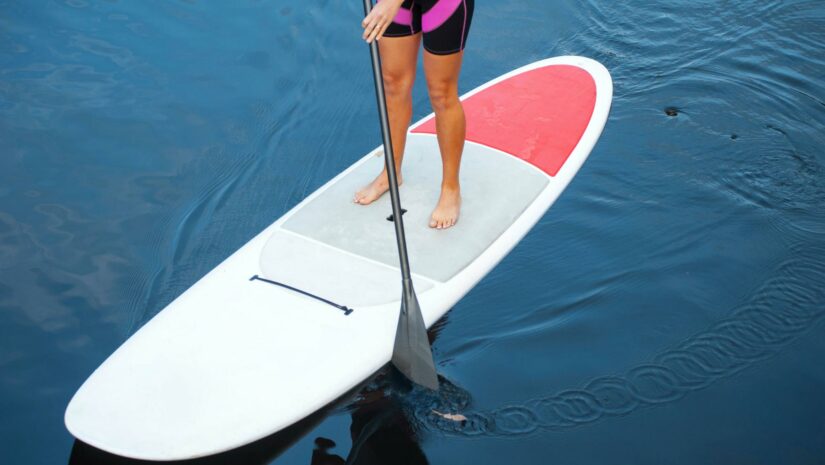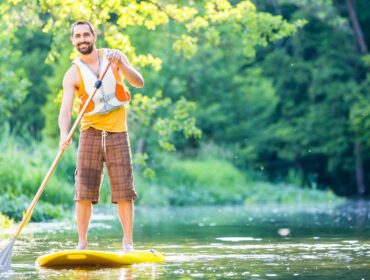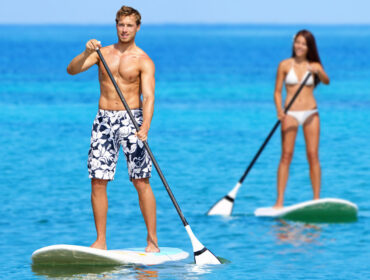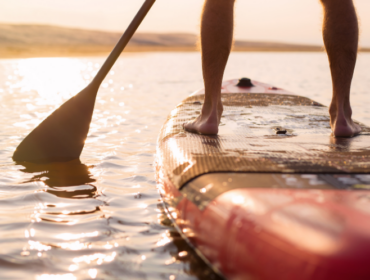Stand up paddle boarding (SUP) is a fun water sport that anyone can enjoy. You don’t have to be a diver or an expert swimmer to paddle leisurely on a lake, catch small waves near the shore, or even do fitness routines on the water—the important thing is that you have the right equipment for you and your needs.
The find the right paddle board for you, you’ll need to consider the following factors and learn how each can affect how the board performs in the water while you’re on it.
How to Buy a SUP: Things to Consider When Choosing a Stand Up Paddle Board
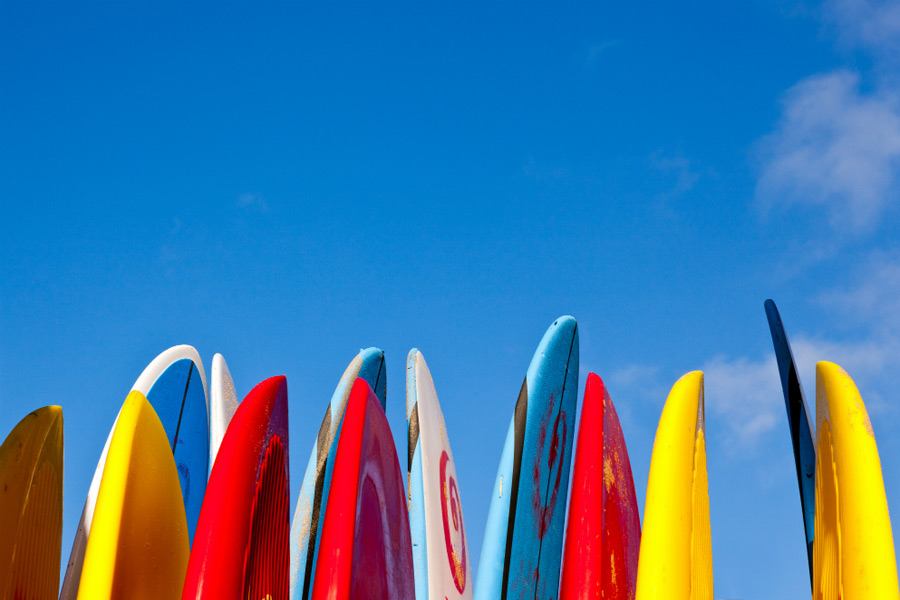
Whatever the type of paddling activity you want to engage in, whether you’re leisure paddling, whitewater paddling, SUP racing, or doing SUP yoga, these factors will help you choose the best stand up paddle board for you.
Body Type
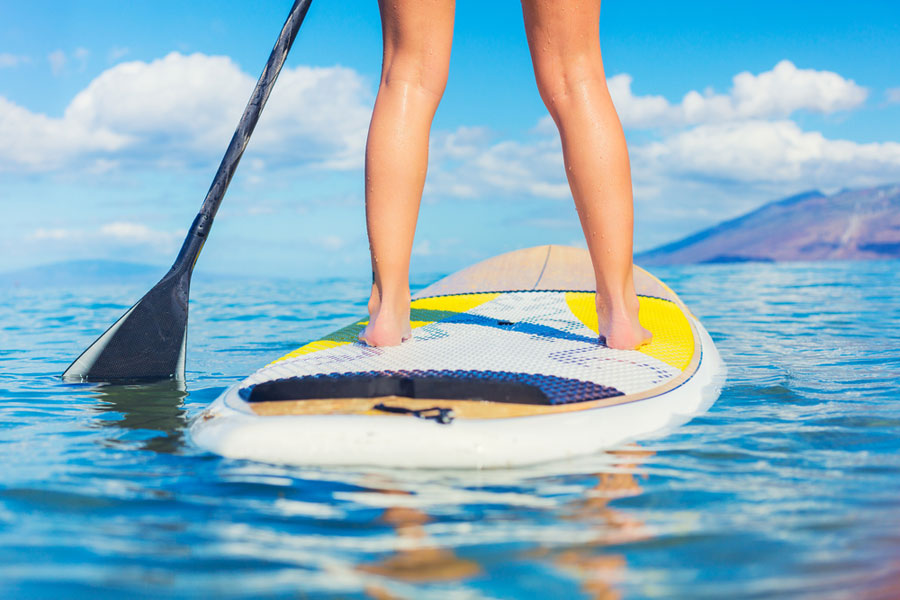
The body of your paddle board, also known as the “hull,” plays a big role in how your board will perform in the water. Therefore, one of the main things you’ll need to consider is whether you need a planing hull or a displacement hull. Understanding what makes each type better at some activities than others will help you in choosing your board, especially now that there are hybrid designs available on the market.
Planing Hull
Like a surfboard, the planing hull is flat and wide. It’s very maneuverable and ideal for beginner paddlers. You’ll want to get a planing hull if you’re going to be doing the following activities:
- SUP yoga
- Surfing
- Leisure paddling
- Whitewater paddling
Displacement Hull
If you’re looking for a good touring board, make sure to find one with a displacement hull. You’ll know the board has a displacement hull if it looks like a kayak or canoe, with a pointed nose or bow in the front end. This enables the board to slice through water more easily and move smoothly compared to the planing hull. Although they are slightly more difficult to maneuver, a displacement hull lessens your paddling fatigue, so you can surf longer and faster. This makes it ideal for:
- Racing
- SUP touring or camping
- Fitness paddling
Solid vs Inflatable
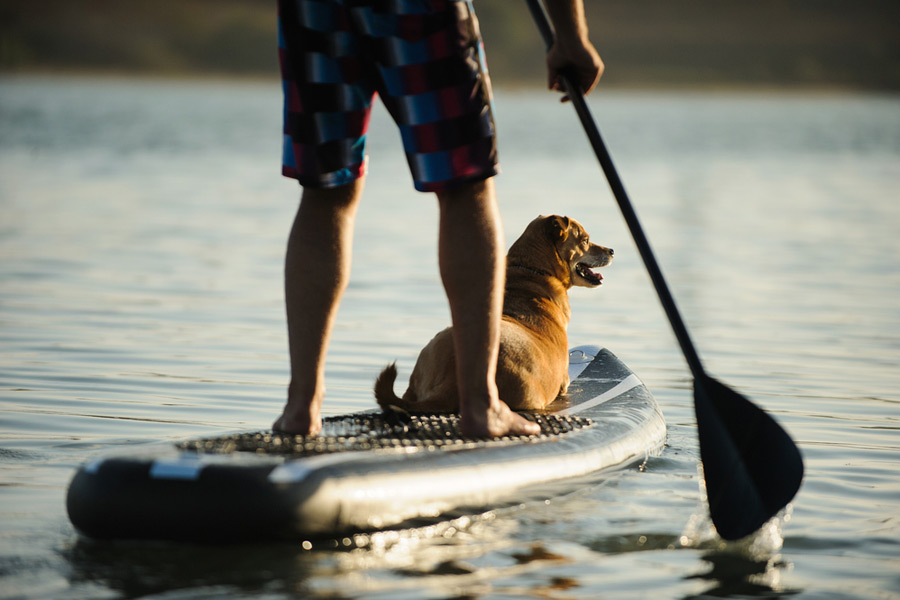
You may have already seen a few people using inflatable stand up paddle boards in the water and thought to yourself: “Why would anyone want to invest in a solid one?” While inflatable boards are more portable, generally cheaper, more lightweight, and easy to carry and store (not to mention more comfortable for SUP yoga and better suited for whitewater paddling near bumpy rocks), it does have its downsides.
Inflatable boards don’t perform as well as solid ones. Solid boards travel faster and smoother in the water with less effort compared to inflatables—so if you’re looking for a racing board, an inflatable is probably not the type of SUP you want to get. Solid stand up paddle boards also offer more stability in the water, which you’ll need if you’re going to be riding waves. Given their specific shapes and sizes, it’s also easier to find the “perfect” fitting solid board for each paddler.
If you’re still unsure which one suits your needs best, here’s a quick comparison of both:
| Solid Paddle Board | Inflatable Paddle Board |
| Made of lightweight and durable EPS foam covered in fiberglass and epoxy, lighter carbon fiber, or plastic | Made of durable PVC plastic |
| Requires space for storage | Deflatable to 12-15 lbs per square inch for easy storage |
| Smoother, faster, more stable, and requires less paddling effort | Comfortable and durable against bumps |
| Better suited for SUP touring and racing | Better suited for whitewater paddling and SUP yoga |
Volume & Weight Capacity
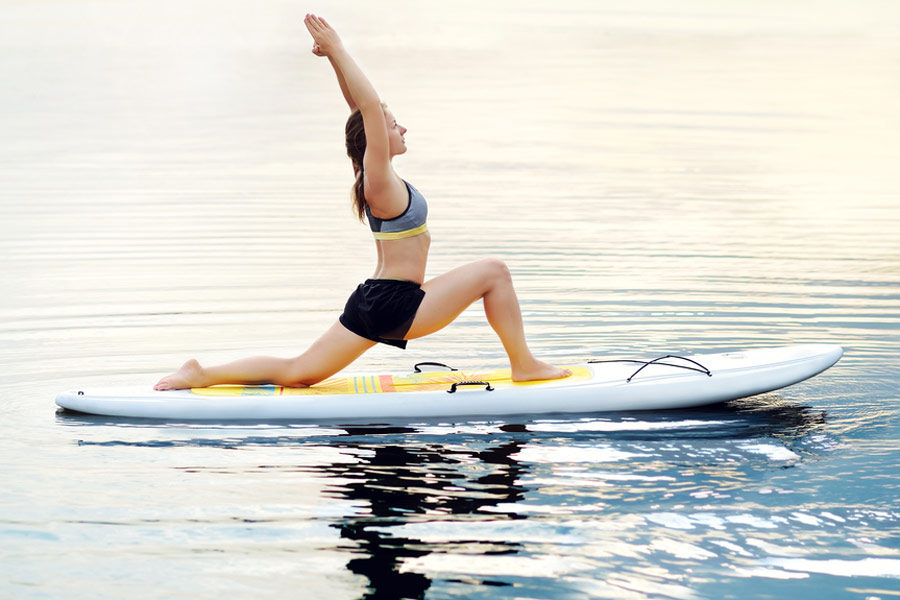
Other important factors that affect a board’s performance is how well it works for the user’s size and weight. This is why paddlers can’t use just any board without first considering its volume and weight capacity.
The goal is to choose a board that will displace enough water for your weight, or else your board won’t feel stable and it won’t be able to support you as well as it should. This, of course, has a lot to do with the size of your board (see board dimensions in this article to learn more). But first, let’s understand how a board’s volume determines its performance.
Volume
A SUP board’s volume is expressed in liters or cubic inches. You’ll find them listed in the specs of any of our SUP boards. The rule of thumb is, the higher the volume of the board, the more weight it can support.
Weight Capacity
The maximum weight capacity of a paddle board is listed in pounds or kilograms. As previously mentioned, it’s important to know a board’s weight capacity so you know whether or not it can support your weight and will ride just low enough in the water to allow efficient paddling.
The weight capacity should include the weight of all that will be on the board, so make sure you add the total weight of the paddle boarding gear, food, and drinking water that you’ll be bringing with you in the water. Fortunately for buyers, manufacturers and retailers usually list down each board’s maximum weight capacity so you can take the guesswork out of choosing the right board volume for you.
NOTE: The volume and maximum weight capacity are more significant to displacement hull boards compared to planing hull boards. This is because displacement hull boards are specifically designed for optimum water positioning. Make sure you’re not too heavy for your board (so it won’t sink too low and slow down) or too light (so it won’t feel heavy or be difficult to maneuver).
Dimensions
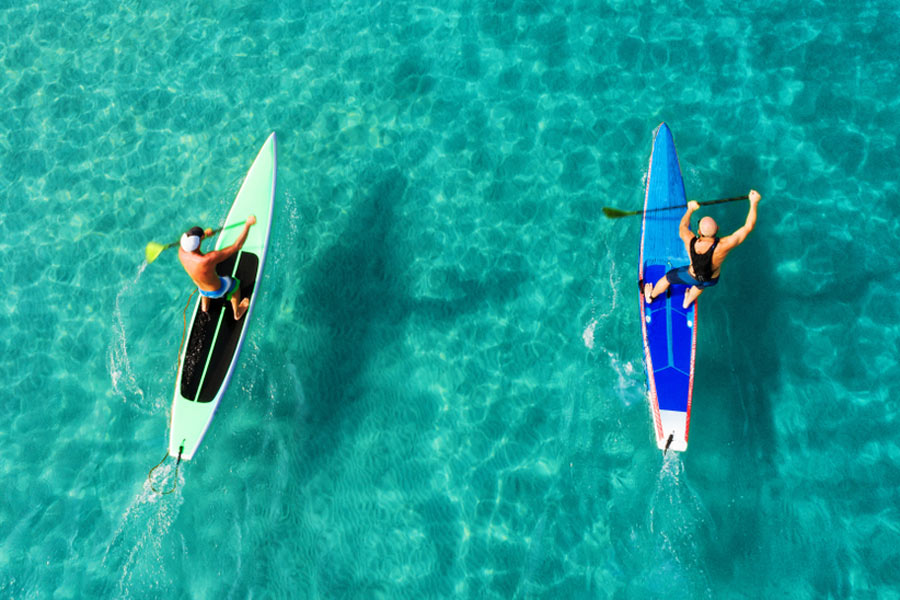
The length, width, and thickness of a paddle board determine its volume and weight capacity. Manufacturers mix and match these in order to come up with just the perfect volume that will support a particular weight capacity and achieve specific performance characteristics.
Length
A paddle board’s length affects how the board handles in the water. There are generally three categories for board length: short, medium, and long. Keep in mind that the longer your stand up paddle board, the faster, heavier (with higher maximum capacity), and harder they are to maneuver. Here’s how these three board lengths compare in terms of their size and use:
Short Boards
- Under 10 feet long
- Great for surfing and children (around 8 feet)
- Almost always have planing hulls
- More maneuverable than longer boards
- Great for waves
Medium Boards
- 10 to 12 feet long
- Ideal for all-around use, including SUP yoga
- May have planing hulls or displacement hulls
Long Boards
- 12 feet, 16 inches and above
- Best for fast paddling and touring long distances
- Most have displacement hulls
- Tracks straighter
Don’t forget to consider your car and home storage capacity, as well as your walk to the beach or shore, before deciding to get a longer board.
Width
Another factor that determines how a board handles is its width. Remember, the wider the board, the more stable—and slower—it will be in the water. And if you end up getting a board that’s too wide for you, it will be more difficult to paddle with it.
Widths range from 25 to 36 inches, and the width you choose should depend on your paddling type, body type, and skill level.
Paddling Type
Longer touring will require you to bring more items with you, including basic necessities like food and a tent, so a wider board will provide you with more storage space. But if you’re going to be racing or surfing, you’ll want a narrower board that’ll allow more speed and better maneuverability.
Body Type
This is possibly the most obvious reason why a person would need a wider board. The bigger you are, the wider your board should be to make it much easier for you to achieve better balance. You may also want to choose a wider board (about 31 inches wide or more) if you’re going to be doing SUP yoga, so you have more space and stability for your poses.
Skill Level
Experienced paddlers have learned to become comfortable with narrower boards, especially since it gives them the speed that they need. But if you’re just starting out, you’ll probably want a wider board that’ll help you feel more stable in the water.
Thickness
Once you’ve found a board with the length and width that’s just perfect for your paddling needs, you’ll also need to consider the thickness. As with the length and width, the thickness also affects the volume and weight capacity of your board.
When you’re down to two boards with the same length and width, it’s up to you to choose which thickness will give you the best support. In this case, here’s what you need to know: If you need a higher volume, go for the thicker board. But if you want to keep the board’s volume as is, choose the thinner board.
SUP Fins
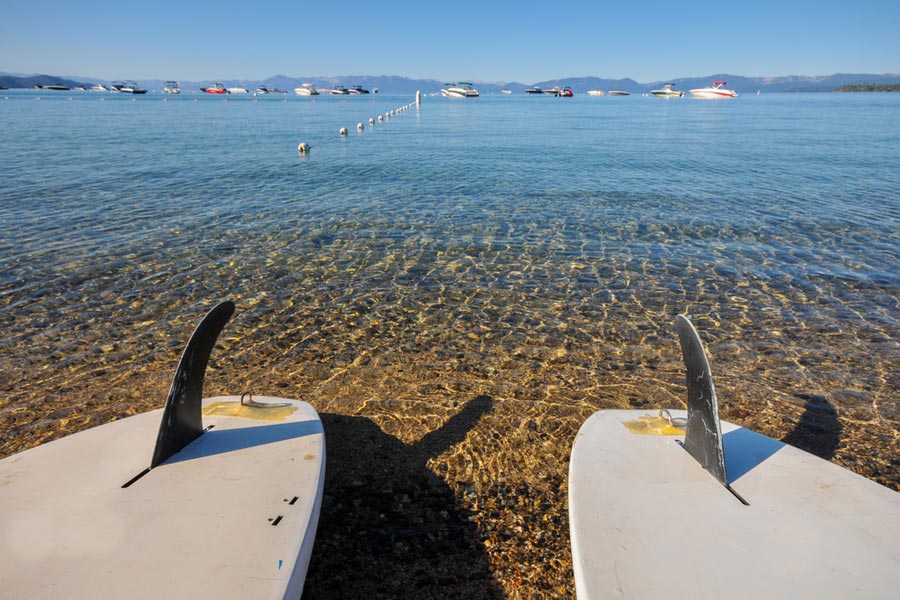
One more thing you may notice about paddle boards is that they sometimes have fins. Some of them have one while others can have up to four, and they usually also vary in size. These add tracking and stability to the board.
The wider and longer the bases of these fins are, the more they provide stability and straighter tracking. The reason why others prefer smaller fins is that they need better maneuverability. They are usually removable, so you can swap fins or configure the number of fins you need for specific SUP styles.
Here are the usual fin configurations that paddlers use for solid boards:
Single Fin Setup
- Many paddling boards include just one fin, which slides inside the board’s finbox and is secured with a nut and screw.
- Provides good tracking and less drag
- Great for flat water paddling
Three-Fin Setup
- Referred to as “thruster”
- Fins are about the same size
- Promotes straighter tracking on flat water
- Good surf control
2+1 Fin Setup
- Large center fin with smaller side fins
- Common configuration for surfing
Inflatable stand up paddle boards can also be configured with the same fin setups, except their fins are made of flexible rubber or are semi-rigid and detachable.
Accessories
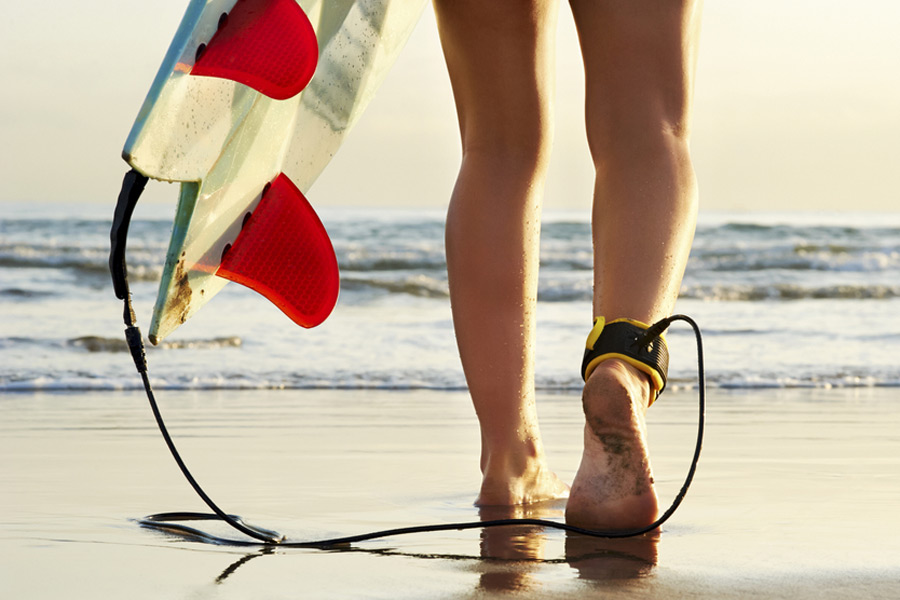
One last thing you might want to consider when choosing the best stand up paddle board for you is the accessories you want to use. These are separately available for purchase, but some SUP packages might already have them included.
- Stretchy Bungee Straps (or Tie-Downs) – Located at either end of the board for securing your belongings, including dry bags and coolers (great for those who do SUP fishing).
- Attachment Points or Mounts – For attaching your seats, cameras, fishing-rod holders, or more importantly, your safety leash.
- Car Rack – These go on the roof of your car for securing your solid SUP board while traveling.
- Paddle – The paddle is the other most important piece of equipment you’ll need aside from your board. However, you’ll also need to choose your paddle carefully in terms of size for maximum paddling efficiency—it should reach your wrist when you hold it up on the floor in front of you while you raise your arm above your head.
Now that we’ve discussed how you can choose the best stand up paddle board for you and the type of paddling activities you want to do, check out this article to get some helpful tips for your first stand up paddle boarding experience.

